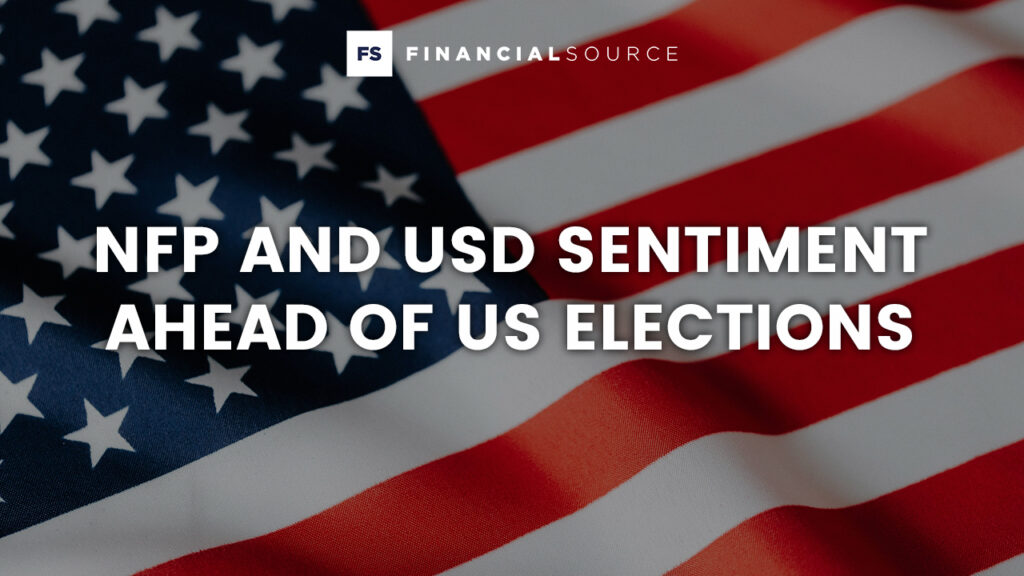NFP and USD Sentiment Ahead of US Elections

Today’s Nonfarm Payrolls (NFP) report comes at a critical time, just days before the US election. With the STIR market pricing a 96% chance of a Fed rate cut, this jobs data could significantly influence USD sentiment heading into next week.
NFP Expectations This Afternoon
The NFP report, forecasted at around 105K, carries notable downside risks due to recent hurricanes and industrial action, including workforce adjustments at Boeing. These factors could lead to an artificially low headline figure. Here’s what to watch for:
- Weak NFP Scenario: If payrolls come in at 99K or below, with unemployment at 4.3% or higher and wage growth at or below 3.8%, this would signal labour market softness. Expect USD selling, with EURUSD and gold buyers taking advantage.
- Strong NFP Scenario: A reading of 185K or more, coupled with unemployment at 4.0% or below and wage growth at or above 4.3%, would reflect labor market resilience, likely supporting USD strength. This would favor EURUSD sellers and USDJPY buyers.
Election Risk and USD Sentiment
With the election imminent, USD is also seeing support due to concerns over potential protectionist policies if Trump wins. Market sentiment skews USD-positive on a Trump victory, as his policies are expected to be more hawkish and pro-dollar.
In short, a softer NFP today could drive USD selling as markets price in a dovish Fed. However, a strong NFP and heightened election risk on a Trump win may keep USD well-supported as traders position for possible policy shifts. Balancing these factors as the news breaks real time will be crucial to not getting wrong footed, which is why we will be covering it live today.
Market Reaction
In summary, weaker-than-expected results in today’s jobless and PCE data, followed by a soft NFP tomorrow, would likely support a near-term dovish Fed narrative, leading to increased USD selling and strength in EURUSD and gold. This setup places EURUSD buyers and gold buyers in a favorable position as the markets continue to weigh the Fed’s response to cooling labor and inflation dynamics.